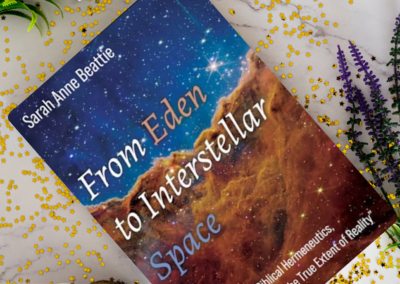The amazing placenta: evolution and lifeline to humanness[1]
Summary: This article describes aspects of how the placenta arose in evolutionary time. It describes how the quality of placental function reflects environmental factors (including social ones) that impinge upon the mother. Maternal stress may lead to suboptimal placental function with adverse long-term effects on the child. The article reflects upon the scientific findings from a Christian perspective.
The placenta is the temporary organ that provides oxygen and nutrients and removes wastes during fetal development. It also secretes hormones, and provides protection from pathogens, toxins and the mother’s immune system.
The mammalian placenta is a relatively recent innovation. It is found only in marsupials (in a rudimentary form) and in eutherian mammals (in which it shows many structural and functional variations). The question arises: can we identify genetic changes that account for the development of the placenta? And the answer is: yes – many old genes have been repurposed, and new information has appeared in the genomes of mammals that specifies novel placenta-specific functionality.
Some of the genetic innovations have been derived from a surprising source. The DNA that comprises our genome is not a static library of information. It has been colonised, and is constantly modified, by semi-autonomous bits of genetic information.
One category of such information originates from outsideour cells. It belongs to a class of viruses called retroviruses. Thousands of retroviral DNA molecules have been spliced into the DNA we have inherited. Many simply degenerate with time. But others have been adopted into the genome where they perform new functions. Two such inherited (or endogenous) retroviruses have retained an intact viral gene: the envelopegene (that enables viruses to stick to, and infect cells). The virally-derived envelopegenes now make a protein that enables placental cells to stick together and fuse into one giga-cell. This happens on the surface of the placenta and forms a protective layer called the syncytiotrophoblast. These repurposed viral envelopegenes have been renamed the syncytingenes.
We can search the human and other primate genomes for the presence of the endogenous retroviruses that delivered the syncytingenes to the genome we have inherited. One of these retroviruses is present in human, ape and Old World monkey genomes (although it has decayed in the monkeys). The other retroviral DNA insert is present in human, ape, Old World and New World monkey genomes. Its insertion site is depicted in Figure 1.
A second category of genome-expanding DNA originates from insidecells. This is a diverse group of ‘jumping genes’ (or, more correctly, transposable elements). They multiply in our genomes by a copy-and-paste mechanism. Endogenous retroviruses and transposable elements make up at least half of our genomes. And many of them have provided short stretches of DNA that control nearby genes. Many genes coming under new regulation possess placenta-specific functions. These include genes encoding placental corticotropin-releasing hormone (that influences the timing of parturition), the IL-2 receptor β (that influences inflammation), and the KCNH5gene (that is growth-promoting).

Figure 1. The insertion site of an endogenous retrovirus. The ERVFRD-1 sequence is thousands of bases long; only the left- and right-hand ends are shown, together with genomic flanking DNA. The target site is shaded. It has not been disturbed in prosimians (lemur and galago), but is duplicated to bracket the ERV, which entered primate DNA in an ancestor of monkeys and apes including humans.
Thedeciduais the maternal part of the placenta. Its formation is regulated by the hormone progesterone, and many DNA sites that mediate progesterone effects are located in transposable elements that originated in ancestors that we share with apes and monkeys.
The genome is a big place. Retroviruses and transposable elements insert their piece of DNA into host genomes at random –within constraints. This means that whenever humans and other species share the same retroviral insert (same retrovirus, same place) all of these species must be descended from the one cell in which that unique insertion event occurred. There are several implications that Christians must consider.
First, we have compelling evidence that humans are descended from ancestors we share with apes and monkeys. Species that share a particular ERV or transposable element are issue of the one individual in that the insertion event occurred. We must conclude that this world that God has created has an evolutionary history.
Second, it is clear that random events can lead to striking evolutionary developments – in this case, the formation of a complex new organ. God has created a world in which matter acts freely and fruitfully to achieve God’s purposes, by an apparently random process within a constrained field. As a Christian scientist has said, ‘the operation of chance in evolution is entirely consistent with a creative purpose. It [chance] is seen as the most efficient and effective way of realizing the potentialities inherent in the nature of the created material.’[2]
Third, repeatedly in mammalian history, different retroviruses have donated envelopegenes to placental function (primates, mice, rabbits, sheep, carnivores …; Figure 2). Independent random events have led to the same beneficial outcomes in different species. This is called evolutionaryconvergence. It indicates that there is a directionality to evolution. ‘Random seeking has led to non-random finding.’[3]Evolutionary histories (such as that of the placenta) are deeply contingent, but their routes are constrained by a deeply embedded order.

Figure 2. Occasions when ERVs have entered mammalian genomes and contributed to placental function.A partial mammal family tree is shown.
Considerations of purpose cannot appear in science itself, but we can interpretevolution in a goal-directed sense. Materialists entertain metaphysical interpretations of scientific findings. One of these is that evolutionary history is meaningless or devoid of purpose. Christians may be perturbed by these ideas, but it is important to emphasise that a faith stance that sees or interprets purpose is equally valid
But fourth, we come to a problem. Pregnancies can go wrong. The syncytin proteins can act abnormally in pre-eclampsia, fetal growth restriction and tumours of placental tissue. Optimal placental function is important for the development of that most complex (and vulnerable) organ, the brain. Placentation serves mentalisation. Placental abnormalities may lead to long-term damage to mental health. They may increase the risk of autism and of schizophrenia.
This is an agonising question. An academic answer is that, just as persons have free will, so natural physical phenomena operate by free process. Can we conceive of a universe without free process? Ultimately, ‘the possibility of disease is not gratuitous, it’s the necessary cost of life.’[4]In addition, Rolston has pointed out that ‘Evolutionary natural history has generated “caring” … Sooner or later every biologist must concede that “care” is there.’[5]Ultimately, Christian theology anticipates the resolution of creaturely suffering only in the suffering of Jesus and the establishment of the Kingdom of God.[6]
Fifth, the vulnerabilities of the placenta serve to remind us of our physical weakness. The Maori word for placenta, whenua, is also the word for land. Biblically we are Adam from adamah, the earth. Carol Newsom has said that ‘we share common ground with the Earth because we are common ground.’[7]The declaration of God’s knowledge of us as we are formed in utero(Psalms 139:13–15), in all our bewildering variety, requires a response that recognizes both the contingencies of our development and the Creator’s supervening care and concern.
Finally, the placenta serves human relationality. The placenta enables prenatal parenting.[8]The mother and fetus influence each other over an extended time period. This mutual interaction facilitates the early development of parental bonding and cooperative behaviour.

Figure 3. Mutual influences between mother and fetus via the placenta.The quality of the father’s support affects programming, inflammation flow between mother and fetus.
If the mother is affected by psychological stress, hormonal changes can perturb placental function and increase the probability that fetal growth and neural development will be impaired. If Afro-American women, in the first two semesters of pregnancy, hear of police shootings of unarmed Black people, they deliver babies of reduced gestational age and weight. This effect is not seen if armed Blacks are shot.
These features correlate with later mental illness. The pain
of injustice is hypothesized to act through placental corticotropin-releasing hormone.[9]It provides a mechanism for transgenerational disadvantage.
The father also influences pregnancy outcomes. Paternal depression during pregnancy has been associated with preterm birth. Fathers have an important role in supporting mothers. A significant contribution to maternal stress comes from unsupportive or hostile partners. If fathers were experienced as being hurtful emotionally during pregnancy, children were more
likely to score less well cognitively. and to show heightened fear responses.
The intangible quality of relationalityaffects placental function and the course of our lives. We might say that ‘we are what we (or our parents) eat.’ There is a seamless interaction between parental love, placental optimality, and fetal mental development. Our
status as being placental mammals suggests also that ‘we are affected by how our parents loved.’
[1]This article is a summary of a paper entitled ‘The amazing placenta: evolution and lifeline to humanness’,published in Zygon55, 306-326 (2020), and is used with permission
[2]Ewart P (2009). The necessity of chance: randomness, purpose and the sovereignty of God. Science and Christian Belief 21, 111–131
[3]Steane A, Faithful to Science(Oxford: Oxford University Press, 2014), 65-71, 149
[4]Polkinghorne J, Quarks, Chaos, and Christianity(London: Triangle, 1994), 45
[5]Rolson H III, Care on Earth: generating informed concern, inDavies P and Gregersen NH, editors, Information and the Nature of Reality: From Physics to Metaphysics (Cambridge: Cambridge University Press, 2010), 205
[6]Wright NT, Surprised by Hope, (New York, NY: HarperCollins Publishers, 2008)
[7]Bauckham R, Bible and Ecology(London: Darton, Longman Todd, 2010), 21
[8]Glover V and Capron L (2017). Prenatal parenting. Current Opinion in Psychology
15, 66–70
[9]Legewie J (2019). Police violence and the health of Black infants. Science Advances5,
eaax7894.



